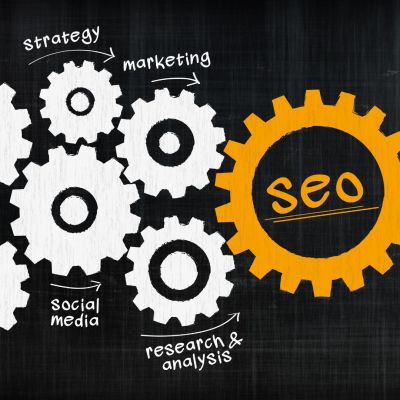How To Optimize Your Images For Search Engines
Written by Shelby Stone
June 12, 2019
Image optimization is a critical step that has to be included under the SEO umbrella. An extensive & complete SEO strategy development campaign includes strategic planning for implementing images that can resonate with users while keeping them relevant to your content.
Major companies like Google recognize the importance of implementing imagery & share some information on image optimization. Here are some tips to help you set off on the right foot with optimizing images for SEO.
1. Use Only Page-Relevant Unique Images
Users react to images even before reading the content. It is only natural that we are drawn to images more quickly than words. Using a unique image that is related to your topic will result in users sharing the content, and will undoubtedly leave a good impression. It is crucial that you take your time while sourcing images depicting humor, drama, or romance that highlights the topic of your article. This will touch your audiences at an emotional level, which will keep them more engaged. It will prove to be much more useful for SEO purposes if you add your own, original images. This is particularly true when the content is about a product or service that you offer. Avoid using standard, royalty-free images that users have seen a million times. Instead, take the time to select an image yourself, that is distinct to your company.2. Focus On High-Quality Format
High-resolution images & content are recommended to attract the attention of search engines. Poor resolution images or ones that are formatted incorrectly show up distorted on mobile devices or tablets. Avoid using images of low quality at all costs. Here are a few tips to remember while selecting file formats:- JPEGs are your best option if you are looking for something in e-commerce. They support high-quality images and have the smallest file size.
- Avoid using GIFs for images for large products. The size of the file becomes too large, and there is no way to reduce it. GIFs can be implemented for thumbnails or smaller, impactful images.
- PNGs are the ideal alternative for both JPEGs & GIFs. Try adopting the PNG-8 format over the PNG-24 if you are posting product photos. These images have exceptionally small file sizes and transcend basic decorative images.
3. Keep The Size Of Your Image File To A Minimum
Google is focusing on mobile accessibility and the mobile-first index. This means you have to keep mobile devices in mind when you are choosing and posting images. Speed is crucial for viewing images on mobiles, You can increase page speed by simply scaling down large image files. Pages that take long to respond often suffer from a higher bounce rate, as users quickly move on. Using a smaller image with a higher resolution of your products is a great solution. Offer your viewers the option to enlarge the image as well. Here are a few tools that are great for optimizing images:- Optimizilla
- Trimage
- Kraken.io
- JPEG Optimizer
- ImageOptim
- CompressNow
4. Set Up Multiple Images For The Optimum Effect
The way you organize your images is just as important as the type of images you select. It is crucial to keep the user in mind and organize pictures based on that. For example, if you are showcasing a condo for rent using several photos, it’s essential that you lead the viewer in a logical order just as if they are moving through the condo. It is also crucial for you to ensure that there aren’t any gaps in the imagery. For example, you present viewers with great exterior images of your car which is on sale, but disregard critical features like the interior, engine, lights, etc. This will have a negative impact on viewers & drive traffic away from your site. Images connect with people in ways text cannot, which makes it necessary to ensure that your viewers have the entire picture. However, first test the effectiveness of the number of images you’re using per page. It is more about balance than anything else. Sometimes, reducing the number of pictures will boost the loading time, which will result in a higher click-through rate. At the same time, using several images will enhance the user experience, which will lead to a lot more conversions. It is crucial that you always carry out a few tests to strike the perfect balance.5. Add an Alt Tag to Your Image
Similar to URLs, search engines also crawl image alt tags. Anyone who searches using keywords mentioned in your image alt tags will instantly find your page listed in the results. The primary objective is to maintain page relevance as well as image relevance. Images that have misleading captions will increase your bounce rate rapidly. It will send weak signals to Google’s search engine that your content is not a suitable match. Alt tags help make your content far more engaging & easier to understand as well. You can also add a caption to your images where reader will be able to read while they are scanning the content on the page. In terms of both, user experience & SEO, not implementing alt tags in your images is a missed opportunity. You may also want to consider SEO video marketing also on your web site, read in this article more information. Follow these simple steps to ensure that all your images are optimized well. For any information about our digital marketing services, feel free to contact The Aliado Marketing Group via this online form, and we’ll get back to you as soon as we can.Categories
Latest Articles
Stay up to date
with news and
educational information
[hubspot type=”form” portal=”5213843″ id=”b19f3e1c-0beb-4946-9d04-2bb47dfa17e0″]
How To Optimize Your Images For Search Engines










